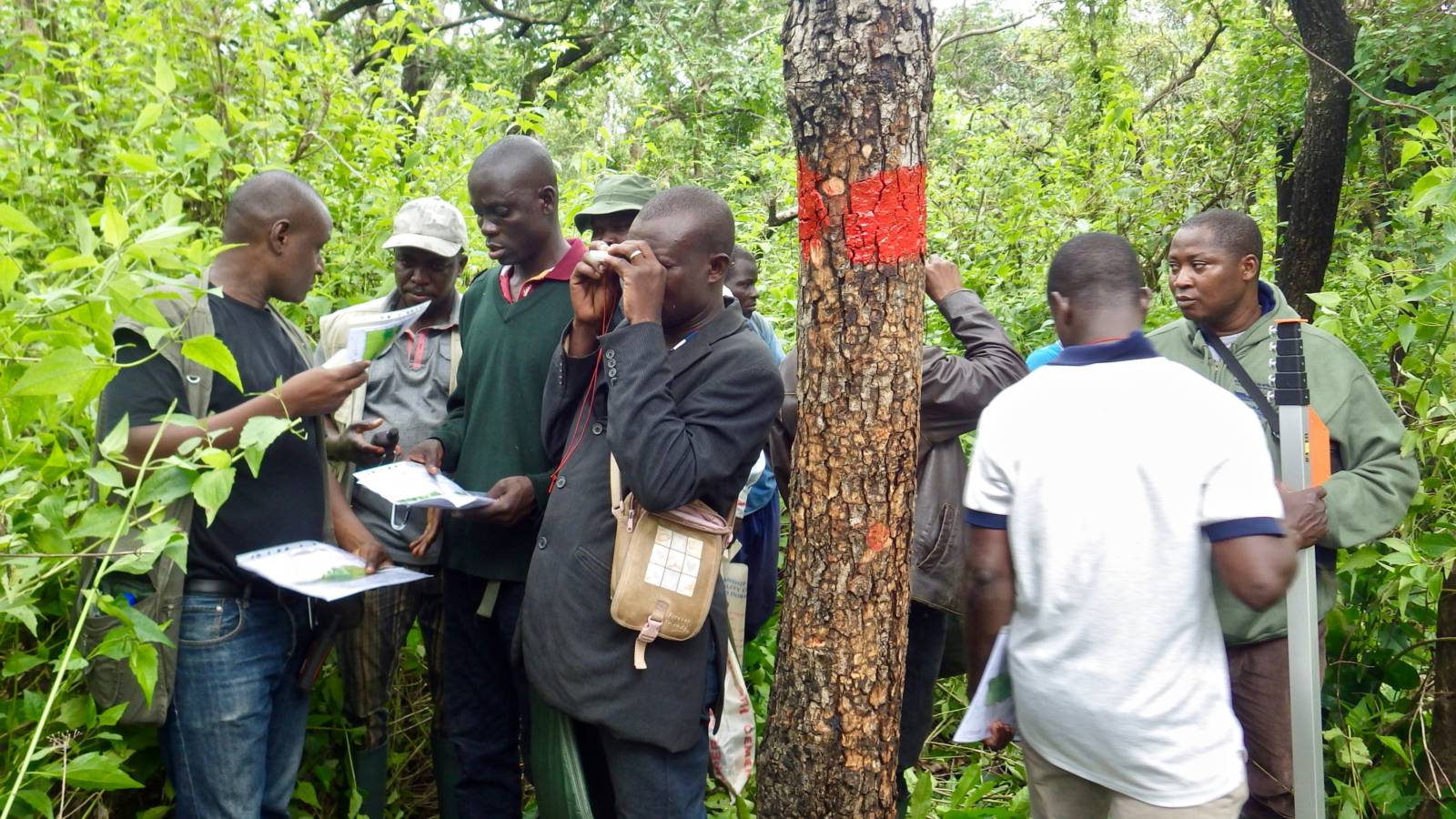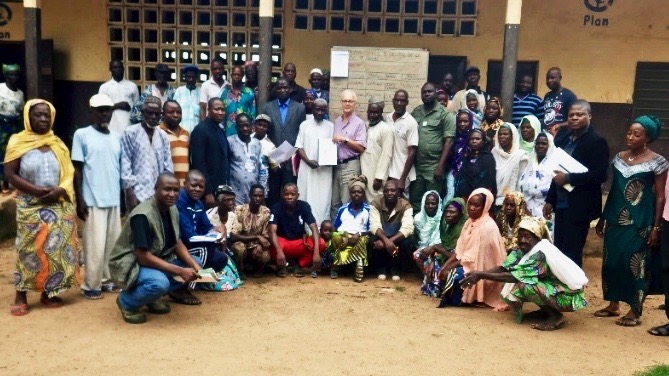Community Forests in Togo ⎯ A Sustainable Management Model
Have a look at the ProREDD’s work with the Goubi forest

Photo: © GIZ
The program Support to REDD+ Readiness and Rehabilitation of Forests (ProREDD) aims to improve the framework conditions for the effective implementation of REDD+ in Togo. After the completion of the national forest inventory, sustainable forest management models were proposed for the three pilot regions of the project. One of the three forest management models to be implemented in the field is the sustainable management of community forests in the Tchamba prefecture.
The prefecture of Tchamba is located in the central region of Togo and according to the forest inventory of Togo carried out in 2016 by ProREDD it is the largest forest area in the country with 93,287 ha. The prefecture of Tchamba also has the highest potential for woodwork in the region with a volume of 830 4424 cubic meters. It is important to put these resources in a sustainable forest management model in order to strengthen the communities’ resilience to climate change and thus increase the carbon stock needed for Togo’s REDD+ process.
The sustainable management model proposed by ProREDD takes into account a set of four community forests covering nearly 19,945 ha including the Alibi1 forest, Bago forest, Koussountou forest and Goubi forest. The communities living in the vicinity of these forests are estimated to comprise 20,000 inhabitants, including 9,090 women, whose active participation in the program will contribute to improving living conditions.
Which approach has ProREDD adopted?
The practical work with the Goubi community forest will support the different levels of actions carried out for a sustainable and community management of forest resources.
The main stages of the Goubi community forest management process include:
Participatory mapping
This approach made it possible to bring together the key actors of the community to develop in a participatory way the map of the soil to clearly identify the zone dedicated to the community forest. This intervention makes it possible to better control the forest area and also to limit land conflicts.
The forest management inventory
The forest management inventory made it possible to assess the available resources, to get to know them better and to make concrete proposals for their use. The inventory was conducted end-to-end by the managers of the Regional Directorate for the Environment and Forest Resources, who are trained for this purpose and to develop a basic forest management plan.
Management inventory data were used to set management options. The forest resources plan was thus subdivided into three series: conservation, exploitation and protection. All interventions that related to the managing of the forest resources were recorded in this strategic document. It provides all the orientations necessary for to sustainably manage the community forest.
Setting up a local management committee
The purpose is to organize the communities around the managing of their forest. The committee is responsible for all development operations of the Goubi community forest. It collaborates closely with the prefectural management for environment and forest resources in Tchamba.
Securing land rights: Signing of legal documents
Land plays a key role when establishing and managing a community forest. In order to stem the potential land conflicts that could taint the process and as stipulated by decree N ° 069 defining the procedures for the allocation and management of community forests in Togo, management charters and land supply contracts were signed by the members of the management committee, the chief canton of Goubi and the prefect of Tchamba. A mechanism for sharing benefits related to forest management has been proposed in these charters and signed by all actors.

Photo: © GIZ
Tree marking of the first annual cutting
The Goubi Community Forest Logging Series has been subdivided into fifteen annual cutting plates. After tagging, the exploitable volumes were calculated and all orientations for the exploitation were highlighted. The exploitation in the community forest is planned for each year with a rotation of 15 years. The use of wood resources and NTFPs by women’s organizations under the responsibility of the management committee with the support of the working group set up by the forest administration executives set up for this purpose by ProREDD. The whole process is led by a working group supported by the ProREDD programme.
The technical entity represents the local forest administration. It checks up on the implementation of the sustainable management framework in the Tchamba prefecture’s community forests. Their interventions ensure that the Goubi community can produce quality timber under sustainable management standards.
Sustainable use of non-timber forest products (NTFPs) by women’s groups that contribute to strengthening the resilience of riparian communities and local development in a context marked by poverty, climate change and ongoing degradation of forest resources.
The most valued non-timber forest products in these community forests are nere (Parkia biglobosa) and shea butter (Vitellaria paradoxa). The processing of these products contributes enormously to the incomes of young people and women from neighboring communities. They are also very useful for the supply and manufacturing of cosmetics. The shea nut that is often turned into butter is very useful in the cosmetics industry and is part of the export products. The processing of shea is often done by young people and women organized in groups. Sales are mostly local, companies buy directly in the community. The women groups are aware of the importance of harvesting shea nuts in managed forests where calculations of the amount to be harvested have been made and enrichment measures have been proposed to ensure sustainability.
Apart from the processing of NTFPs, the main forest product that supplies small and medium-sized enterprises, especially small sawmills, carpentry and sculpture workshops in the Tchamba prefecture, is timber. Throughout the value chain, sustainable wood supply contributes to poverty reduction by the different jobs created in cutting, transporting and processing in the workshops to meet the needs of end-users for young people. The small sawmills and carpentry shops in the area are the structures that employ a large part of the young people.
It is clear that forestry is a key sector for local development and a provider of employment for young people. It helps to strengthen communities, increases their capacity to adapt to change and lift them out of poverty. But it is very important that the basic principles and standards of sustainable management are taken into account. It is in this logic that ProREDD supports the implementation of a sustainable management model of four community forests (19,945 ha) including that of Goubi in the prefecture of Tchamba.

